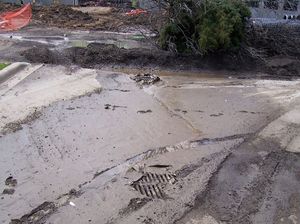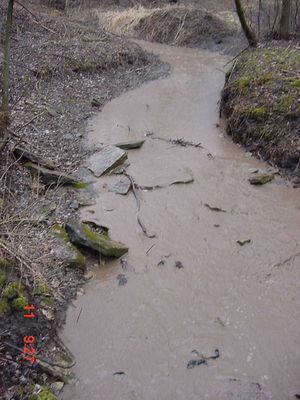
What is stormwater and why does it need to be managed?
What is stormwater and stormwater runoff? The water on earth constantly cycles between liquid, gas, and solid states. As part of the water cycle, water vapor in the air condenses and falls as rain and / or snow. When that rain or snow hits the ground it is called “stormwater”. Stormwater, including melted snow or ice, eventually does one of the following:
- runs off to a surface water (pond, lake, stream, river, etc.);
- soaks into (infiltrates) the ground; or
- evaporates back into the atmosphere.
Stormwater runoff is the portion of stormwater that runs off to a surface water. Many factors affect how much of the stormwater will run off, including the following.
- The temperature determines if the precipitation is frozen and how fast it melts. Snow that accumulates during winter may melt quickly in spring, which can lead to flooding. High temperatures also increase the amount of water that evaporates.
- Vegetation can slow the rate of runoff and take up water, thus reducing the amount of runoff.
- Runoff will increase as the slope of the land surface increases.
- The most important factor affecting stormwater runoff is the makeup of the surface that stormwater runs over. If the surface is sandy (pervious surface) more water soaks in than if the surface is clayey. Impervious surfaces , such as streets and roofs, allow for almost no infiltration. Thus, areas with a high percent of impervious surface will have a large amount of stormwater runoff.
Why does stormwater need to be managed? Over the past century or so we have built homes, roads, shopping centers, commercial buildings, and so on, all of which dramatically increased the amount of impervious surface. At the same time, we have modified the landscape to facilitate rapid drainage of stormwater runoff from our developments. This has had the effect of concentrating the stormwater runoff and decreasing infiltration. This causes three problems.
- Flowing water is quite powerful and picks up soils, debris, leaves, and oils from the impervious surfaces it flows over. Unless treated, this material reaches surface waters, where it can pollute them beyond the point where the water supports wildlife or recreation.
- The increased volume of water running off and the increased speed of the drainage means large quantities of water reach surface waters quickly. This can lead to flooding and scouring (erosion) of river channels.
- Less water infiltrates, resulting in reduced soil moisture and less water percolating to groundwater. Consequently, plants may be stressed during dry periods and aquifer (groundwater) levels may decrease. Depleted groundwater levels may, in turn, reduce water levels in streams and reduce drinking water supplies.
We can minimize or reduce these negative impacts through proper management of stormwater. Examples of management strategies include the following.
- Retain runoff water and release it slowly to reduce flooding.
- Capture and treat runoff to reduce pollutant loads.
- Reduce the amount of materials available to the rapidly flowing water by stabilizing slopes with ground cover and removing debris and other potential pollutants from the path of the runoff.
Find out more
This page was last edited on 20 July 2022, at 19:42.



